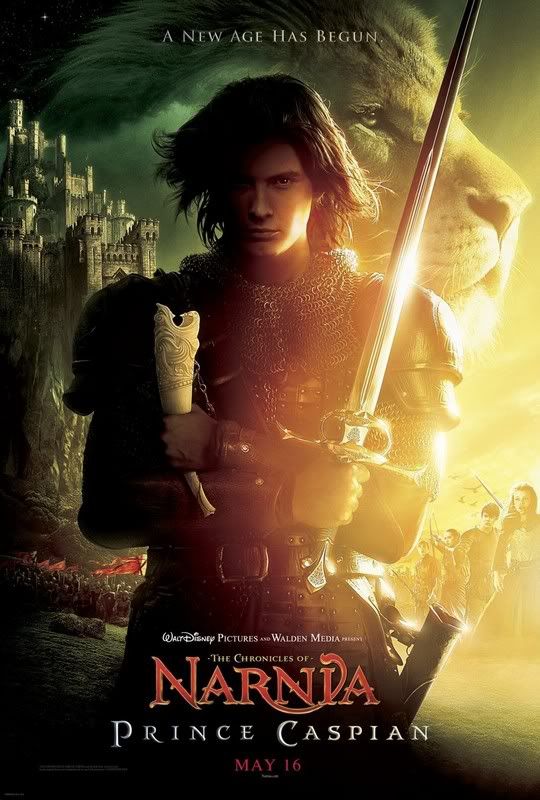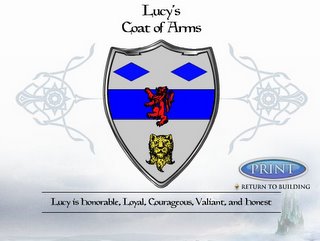
WETA's Richard Taylor & Daniel Falconer and Costume Designer Isis Mussenden delve deep into the team effort that it took to realize the character of Miraz, Narnia's scheming usurper.
Weta WorkshopThe design of Miraz's ornate armor had its roots in the back story of the Telmarine culture- that being one of pirates from ancient Earth who found their way into Narnia centuries ago and established a new civilization there. Searching for a unique shape and color identity to distinguish the Telmarines, Weta's artists mined this lost history for inspiration. Despite now being a people estranged from the sea, elements of their nautical past are evident in the direction of the design their armory took and in turn these same motifs were incorporated into Miraz's plate armor.
Miraz's helmet was the first component of his armor to find a strong direction during the design phase. From the outset Director Andrew Adamson suggested experimenting with the idea of masks and this eventually lead Weta's designers to create the stylized, bearded faceplate seen in the final helmet (crafted by Weta sculptor Max Patte). Designer Paul Tobin found inspiration for the shape of Miraz's helmet in the styles of the Spanish conquistador explorers, while the mask was influenced by the intimidating masks of samurai helmets. Paul reinterpreted them, using sculptural stylization derived from classical European statuary and the iconic representations of the marauding conquistador explorers to marry the helmet and mask together into something new and original.
Among the first of Miraz's designs to be finalized was his elaborate sword, which designer Brad Goff gave a distinctive, deeply etched hilt. The rich engravings were a mixture of pictorial elements, illustrating the Telmarines' history, and swirling wave and ivy motifs.
At the same time, Paul Tobin was honing the design of Miraz's shields, employing three motif themes; that of the compass (another hint to the Telmarines' seas-going past); stylized fish scales; and strong architectural shapes that would appear also in the design of Miraz's castle. The shields also established Miraz's color palette- one of deep sea blue-greens against burnished bronze.
The design of Miraz's armor flowed naturally out of the shapes being established by his helmet and weaponry. The conscious decision was made to create a broad, imposing figure that would stand in stark contrast to the color and style of armor worn by the Pevensie children and Prince Caspian. By choosing bronze as the metal base tones for Miraz's armor, he immediately stood out from his fellow Telmarine lords as something different, but also presented a heavy, aggressive contrast to Peter's lighter, silver-hued armor. Historically, Miraz's armor references later real Earth styles, drawing heavily from the romantic era and featuring more complex articulation and refined construction than Peter's outfit.
Designer Nick Keller incorporated Brad Goff's deep, pictorial etchings along with the wave and fish scale patterns when creating the design for the richly patterned suit of plate armor. The brigadine armor that became an icon of the Telmarine infantry was also assimilated into Miraz's design, under his breastplate. The entire process was deeply collaborative, with all the various components of Miraz's distinctive armor taking shape alongside one another and the various artists and craftspeople of Weta sharing ideas and designs to ensure the result would be a cohesive and satisfying filmic statement. Even once the drawings were approved, much of the design took place on the workshop floor as the details were explored and resolved by designers and crafts people working together.
- Richard Taylor and Daniel Falconer
Costume DepartmentWhen the costume department began Prince Caspian, we had no idea what a massive job was ahead of us. In our innocence we began, and one of the first jobs upon us was to define the Telmarine culture. To accomplish that we had to understand their leader, the ever-scheming Miraz.
From the military looks to the civilian garb, it was essential that Miraz was strong, Mediterranean, a bit Pirate, ruthless, barbaric in character but more sophisticated in style. I was inspired initially by images from 15th century Spanish soldiers. I came upon something I was not familiar with as an armor piece, and that was the Brigandine. After a wonderful visit to the Metropolitan Museum of Art in NY, the curator Stewart Pryer educated me about the leather plated armor. Working with WETA workshop and their wonderful armorist, the bronze armor was adopted and executed to compliment and finish the military look.
I had already decided on my pallet for the Telmarines, taken from a set of paintings by El Greco. Considered a Spanish painter, although Greek (thus the name), these painting stand at the Prado Museum in Madrid. Gruesome images, acidic and cool, perfect for our needs. The next piece of the puzzle was a book about the Sardinian cultural dress I came upon on a shopping trip to Italy. A notorious rough and tough island, it was just the new look I was after. The mood was set. Skirts, vest, wide belts, gaters and jackets.......no capes! My Lord was going to be all Telmarine, and that was going to be a fresh and unique look.
But what is all that without an actor? Enter Sergio Castellitto, a dashing Italian with style and presence. I could not have asked for a more charismatic man to fit the shoe or should I say, boot!
His positive response to the look was an immediately sign it was all coming together. Sergio works every costume he wears with the confidence of Lord Miraz. It is a wonderful feeling of accomplishment for a costume designer when the actor "feels" complete once they are dressed. Sergio was a joy, the pleasure was all mine. The hours of hard work and endless fitting hopefully will pay off once the evil Lord Miraz shows his villainous face, and such a nice face it is.
- Isis Mussenden




